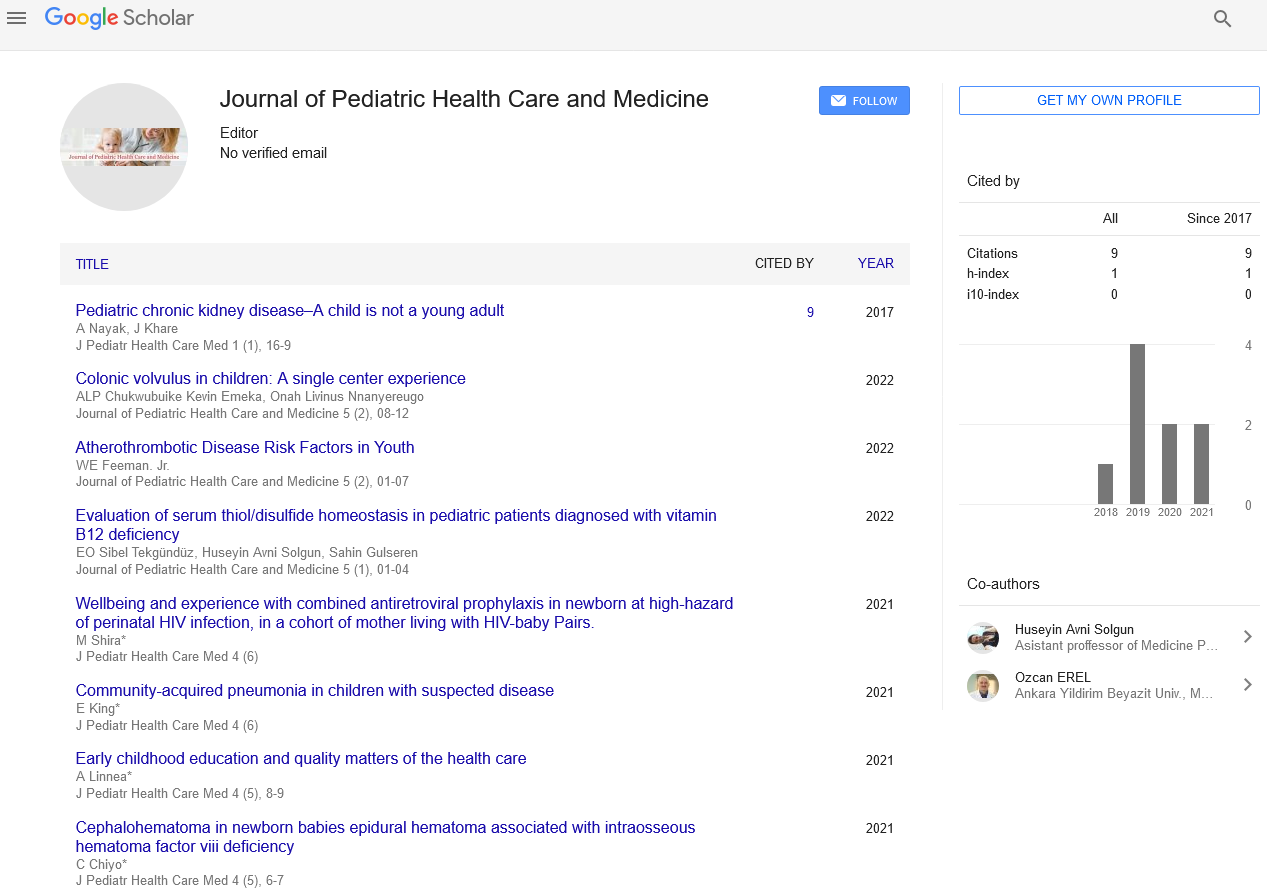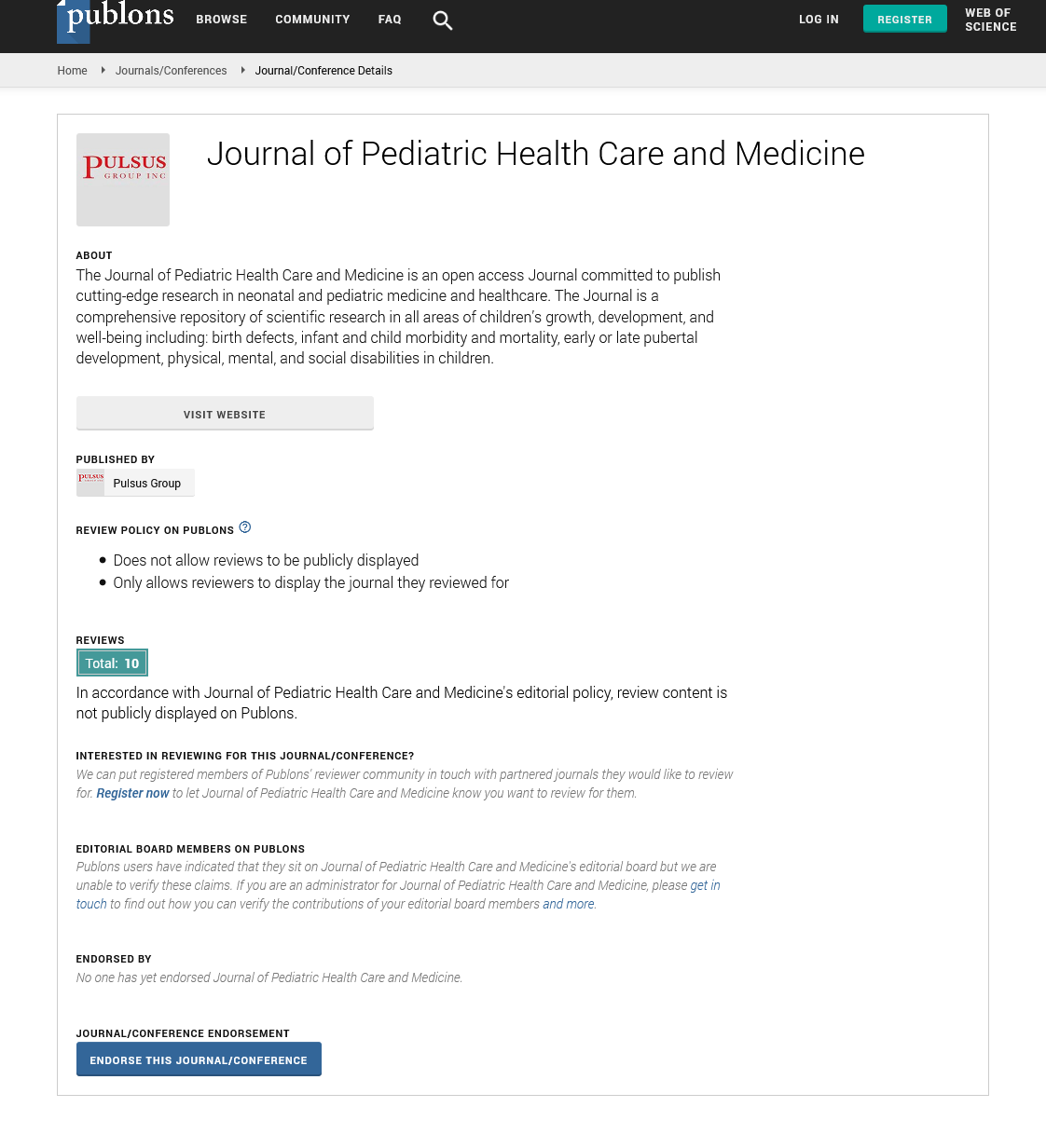Advances in Pediatric Anesthesia
#Equally contribution
Received: 25-Jun-2021 Accepted Date: Jul 12, 2021; Published: 20-Jul-2021
Citation: None
This open-access article is distributed under the terms of the Creative Commons Attribution Non-Commercial License (CC BY-NC) (http://creativecommons.org/licenses/by-nc/4.0/), which permits reuse, distribution and reproduction of the article, provided that the original work is properly cited and the reuse is restricted to noncommercial purposes. For commercial reuse, contact reprints@pulsus.com
Abstract
Expounding on propels in a field of medication typically incorporates some pride about progress which one was observer to or even a member in. The more youthful one is, the more excitedly every development is praised and invited. This is human instinct and nothing to be grumbled about
Abstract
Expounding on propels in a field of medication typically incorporates some pride about progress which one was observer to or even a member in. The more youthful one is, the more excitedly every development is praised and invited. This is human instinct and nothing to be grumbled about
Keywords
Advances pediatric, Regional intravenous anesthesia
Introduction
Expounding on propels in a field of medication typically incorporates some pride about progress which one was observer to or even a member in. The more youthful one is, the more excitedly every development is praised and invited. This is human instinct and nothing to be grumbled about. Be that as it may, when anesthesiologists, having worked and battled in the field of pediatric sedation for around 40 years, think back to past progresses, a more practical, even agonizing picture rings a bell. There was a value which an impressive number of patients needed to pay for progress, destroyed wellbeing or even demise. This experience of many years of training is once in a while introduced in the writing however ought not be failed to remember when we gladly recollect progresses in pediatric sedation
Heart failure calculations are of specific significance in pediatric sedation since they are life saving when heart failure happens in any case solid youngsters during sedation because of surprising unfavorable occasions. The last ILCOR (International Liaison Committee on Resuscitation) general capture calculation was distributed in 2005, covering pediatric CPR too. Rules don't really mirror the most refined clinical norms. Be that as it may, there has been a frank endeavor to discover an agreement among a gathering of intrigued trained professionals - to offer guidance for a particular technique, for this situation CPR. ILCOR has attempted to discover an agreement subsequent to going through a logical assessment measure and has summed up ends and suggestions. This assessment cycle is pointed toward building up more clinical proof for future rules. This doesn't imply that more established rules are risky.
Notwithstanding, more science is associated with the most up to date rules, presumably settling on them a superior decision. An excessive number of parts of the CPR-measure have not been altogether examined. Subsequently, the clinical experience of clinicians rehearsing CPR is vital. A genuine illustration of a randomized report that is feeling the loss of the appropriate response we need for the clinical utilization of CPR was one done in a randomized, twofold visually impaired way as a salvage treatment for in-clinic heart failures in youngsters. A ten times higher portion of adrenaline (100 µg/kg) was given to kids during CPR when the standard portion.
The creators couldn't recognize any advantage of the ten times higher portion, which may be more terrible than the standard portion, and they don't suggest such high dosages.
This finding doesn't offer any assistance in clinical circumstances where we twofold, then, at that point triple or fourfold the standard portion of adrenaline when the heart doesn't react to CPR. Anaesthesiologists with many years of clinical involvement with CPR realize that a few youngsters react to high portions of adrenaline, frequently showing great neurological result, in case dosing is raised in a stepwise design. A comparative encounter was accounted for by Todres and Goetting. A quick ten times expansion in adrenaline when the standard portion of 10 µg/kg fizzles, reflects hasty clinical practice. The motivation behind why higher portions of adrenaline are useful is likely because of insufficient heart pressure or uncommonly extreme acidosis, keeping adrenaline from acting. Depending on their immense clinical experience, rescuers should utilize higher portions of adrenaline prior to stopping revival, as it will help in a reasonable number of cases.
Exploratory and clinical examination, which changed various segments of CPR, was presented. Fixation on ceaseless heart pressure with little interference by ventilation, and heartbeat checks or cadence examination after defibrillation, is obligatory, as in grown-up patients. The significance of keeping the infants warm, and abstaining from suctioning and aviation route controls when in doubt to limit injury to the aviation route and lung, are the top places of accentuation in the new rules. The reaction to ventilation ought to be evaluated by the pulse and oxygen supply adjusted by gestational age.
Presumably the main general accomplishment in pediatric sedation during the most recent couple of years, one impacting all spaces of pediatric sedation, was the re-presentation of provincial methods in the last part of the 1980s. This was conceivable because of the coming of safe local sedatives and the better comprehension of the skeletal life systems of babies and kids, prompting a more secure dosing. In spite of the fact that bupivacaine stays the most regularly utilized nearby sedative in babies and kids, and has the longest term of activity.
Conclusion
Fringe nerve blocks and caudal sedation are exceptionally protected, however extraordinary alert is consistently obligatory to keep away from incidental effects. Wellbeing relies enormously upon the adequate preparing of pediatric anesthesiologists. The all around prepared pediatric anesthesiologist attempts to keep away from hazardous methods of utilization of provincial sedatives and is constantly






